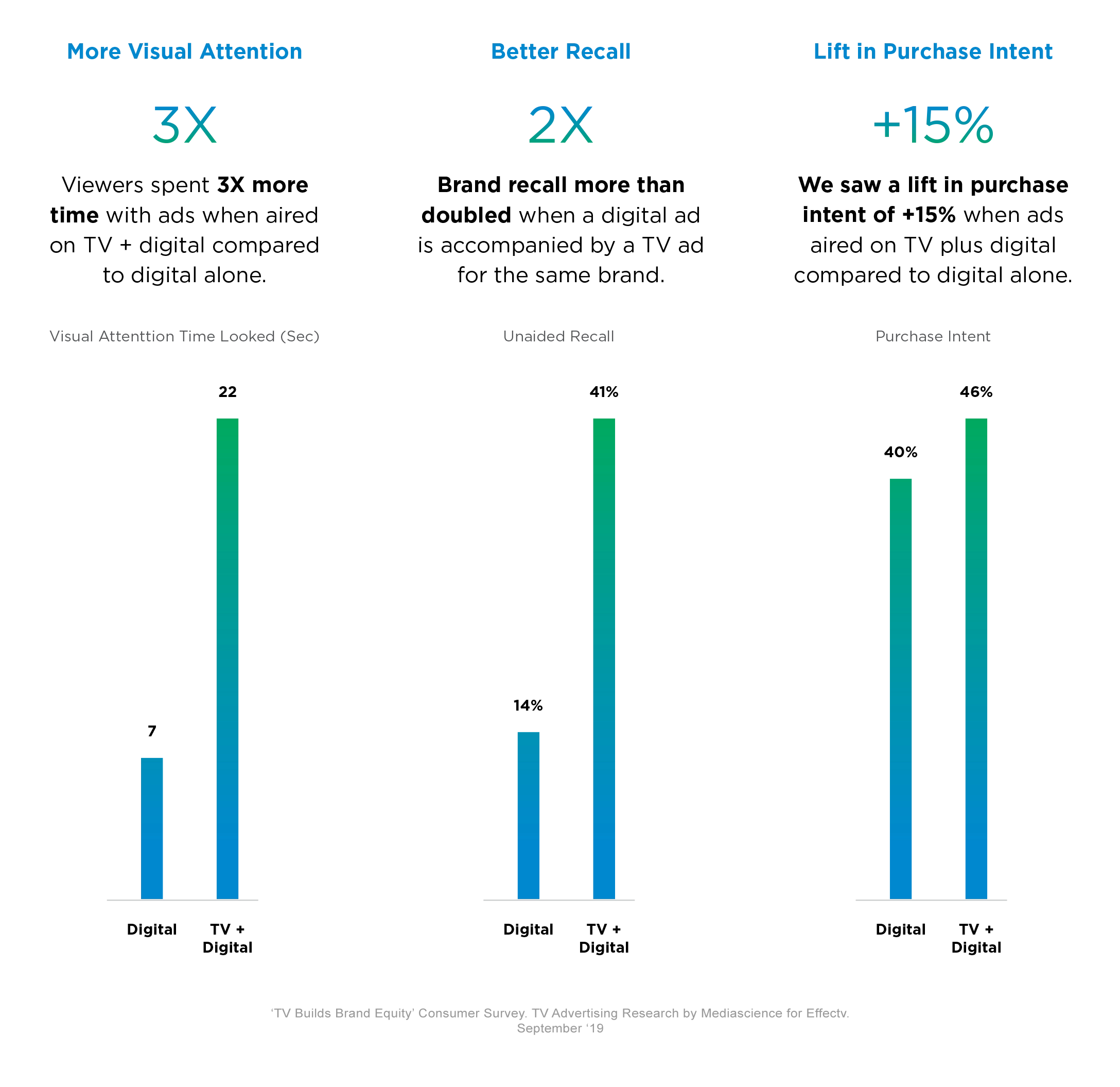Small and mid-sized businesses have many available advertising options. So how best to decide which mix of platforms will deliver the greatest return on investment (ROI)? There’s no one-size-fits-all answer, but there are a few options worth considering, namely TV and digital advertising platforms. Read on to learn more about digital vs. TV advertising for your brand.
Digital Advertising: Appealing, but Changing
Digital advertising tends to be a first choice for small businesses. Low barriers to entry mean digital creates a level playing field for businesses of all sizes to reach their target audiences. Options range from social media to search advertising, with great flexibility in execution and price.
Despite its advantages, digital advertising isn’t a perfect advertising platform for all businesses. Globalized competition, an overwhelming number of options, and ad-blocking software can all limit the reach and value of digital advertising. Plus, the eventual disappearance of third-party cookies will make it increasingly challenging to track and target ads and audiences across the web.
TV Advertising: Multiple Flavors to Consider
TV advertising has become more attractive to small and medium-sized businesses as audience metrics have become more accurate and precise. And studies suggest TV ads lend more credibility to a brand’s image than digital ads alone. There are three predominant “flavors” of TV advertising – broadcast, cable, and video on demand (VOD).
Broadcast TV
Broadcast TV is largely dominated by the “Big Four” networks – ABC, CBS, FOX, and NBC. However, there are other network-owned and -operated or affiliate stations across the country. Many of these offer a hyper-local news focus. Some also offer apps that enable viewers to watch broadcast content on computers or mobile connected devices. Broadcast TV offers advertisers the opportunity to reach viewers who don’t have cable subscriptions.
Linear TV
For most advertisers and marketers, linear (live) TV delivered via cable subscriptions drives positive results through every part of buyers’ journeys, from building general awareness to completing a final purchase. What’s more, share of viewing for cable TV is 70% vs broadcast’s 29%.1
In addition to its dominant share of viewers, technology enhancements now allow marketers to make “digital-like” linear TV advertising buys. This enables them to efficiently target the right households across premium video inventory – a powerful boost to business growth.
Cost was a perceived barrier to entry for some small businesses. Today, the ability to reach defined audience segments and geographic targeting, make cable TV a realistic and often necessary option for all brands.
Video on Demand
Advertising-based video on demand, or AVOD, gives cable subscribers access to premium video content available on-demand that is monetized through ads. Xfinity’s on demand library and NBCUniversal’s Peacock are prominent examples of AVOD offerings. For marketers, AVOD can offer more personalized ads that reach attentive and engaged audiences. The platform is also a great reach vehicle when paired with linear TV. In the first half of 2021, linear TV viewing accounted for 88% of daily viewing time, with VOD/DVR accounting for 12%2.

So What’s the Right Mix?
This is the question every marketer wants to answer correctly. The first option that pops into the minds of most small and mid-size business decision makers is to go full-on digital. However, there is increasing evidence that another approach to your advertising campaigns makes more business sense.
A study conducted by Effectv suggests that the most effective strategy is a blend of TV and digital advertising. In the study, a panel was shown ads on YouTube, Facebook, or some combination of these digital platforms and TV. Ultimately, eye tracking found that viewers spend three times as much time watching ads when they’re aired on TV and digital compared to purely digital ads.3

The benefits of a TV-plus-digital approach are clear, and there are media experts at Effectv who are ready and able to get marketer’s messages to their audiences. With audience data insights you can trust for personalization and segmentation and the flexibility to advertise within your budget, it’s a platform that makes advertising on TV easy for small and mid-sized business.
Sources:
1, 2: Comcast Aggregate Household Viewership Data. Percentage share of viewing between Cable, Broadcast, and Premium network categories. Trend of cable networks share of viewing. 2019-1H 2021.
3: TV Builds Brand Equity’ Consumer Survey. TV Advertising Research by Mediascience for Effectv. September 2019




